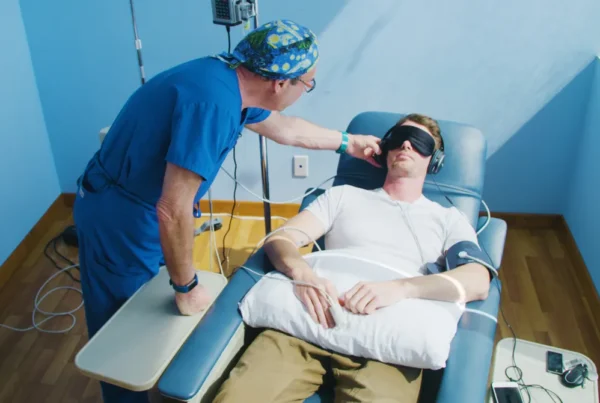Ketamine therapy has been gaining popularity for its therapeutic effects and ability to alleviate depression, anxiety, and other mental health concerns. But did you know that combining mindful meditation practices with ketamine therapy can lead to even better results? Meditation and ketamine work together to promote relaxation, mental clarity, and emotional balance. In this article, we’ll explore mindfulness meditation practices you can use during and after ketamine therapy sessions to help you connect with yourself and achieve lasting inner peace.
Focus on Your Breath
Breathing is an essential and powerful tool we all have that we can use to help us find peace and calmness. During and after ketamine sessions, try to slow your breathing and focus on your breath. Take long, deep breaths through your nose and out through your mouth. Imagine your breath is a warm wave washing over your whole body and expelling negativity from your system.
Ground Your Body
 Grounding yourself can help you feel more connected to the present moment and anchor you to reality. Try this simple but effective practice: Sit comfortably with your feet firmly planted on the ground. Take a deep breath, and as you exhale, imagine roots growing from the bottom of your feet, grounding you to the earth. Imagine yourself as a tree with strong, sturdy roots that keep you grounded and erect.
Grounding yourself can help you feel more connected to the present moment and anchor you to reality. Try this simple but effective practice: Sit comfortably with your feet firmly planted on the ground. Take a deep breath, and as you exhale, imagine roots growing from the bottom of your feet, grounding you to the earth. Imagine yourself as a tree with strong, sturdy roots that keep you grounded and erect.
Visualize a Peaceful Place
 Another way to promote relaxation during and after ketamine therapy is to visualize yourself in a peaceful and serene environment. This could be a beach, a mountaintop, or even your own backyard. Close your eyes, take some deep breaths, and imagine yourself in your tranquil setting. Try to immerse yourself in this calming space’s smells, sounds, and sensations. Visualization can be an excellent tool to relax and reduce emotional distress.
Another way to promote relaxation during and after ketamine therapy is to visualize yourself in a peaceful and serene environment. This could be a beach, a mountaintop, or even your own backyard. Close your eyes, take some deep breaths, and imagine yourself in your tranquil setting. Try to immerse yourself in this calming space’s smells, sounds, and sensations. Visualization can be an excellent tool to relax and reduce emotional distress.
Practice Loving-Kindness Meditation
 During ketamine therapy, it’s common to experience intense emotions and feelings of vulnerability. A great way to address these feelings is to practice loving-kindness meditation. Sit quietly, take a few deep breaths, and repeat the phrase “May I be happy, May I be well, May I be at peace” to yourself. Then extend these wishes to people you care about, your community, and eventually, to all living beings. You’ll be amazed at how this practice can lead to a feeling of universal compassion and empathy.
During ketamine therapy, it’s common to experience intense emotions and feelings of vulnerability. A great way to address these feelings is to practice loving-kindness meditation. Sit quietly, take a few deep breaths, and repeat the phrase “May I be happy, May I be well, May I be at peace” to yourself. Then extend these wishes to people you care about, your community, and eventually, to all living beings. You’ll be amazed at how this practice can lead to a feeling of universal compassion and empathy.
Keep a Gratitude Journal
 After ketamine therapy sessions, your mind will be more open to positive thoughts and emotions. Use this opportunity to focus on gratitude and appreciation. Keep a journal where you write down things you are thankful for and happy about each day. This practice can help you maintain a positive outlook on life, even in difficult times.
After ketamine therapy sessions, your mind will be more open to positive thoughts and emotions. Use this opportunity to focus on gratitude and appreciation. Keep a journal where you write down things you are thankful for and happy about each day. This practice can help you maintain a positive outlook on life, even in difficult times.
Meditation is a powerful tool that can enhance the therapeutic effects of ketamine therapy. Whether you are new to meditation or an experienced practitioner, integrating mindfulness practices into your at-home ketamine therapy routine can lead to even better results. So, take some time to practice focus, visualization, and loving-kindness meditation, and keep a gratitude journal. Remember that inner peace lies within yourself; you can cultivate and maintain lasting peace and clarity with these practices.



